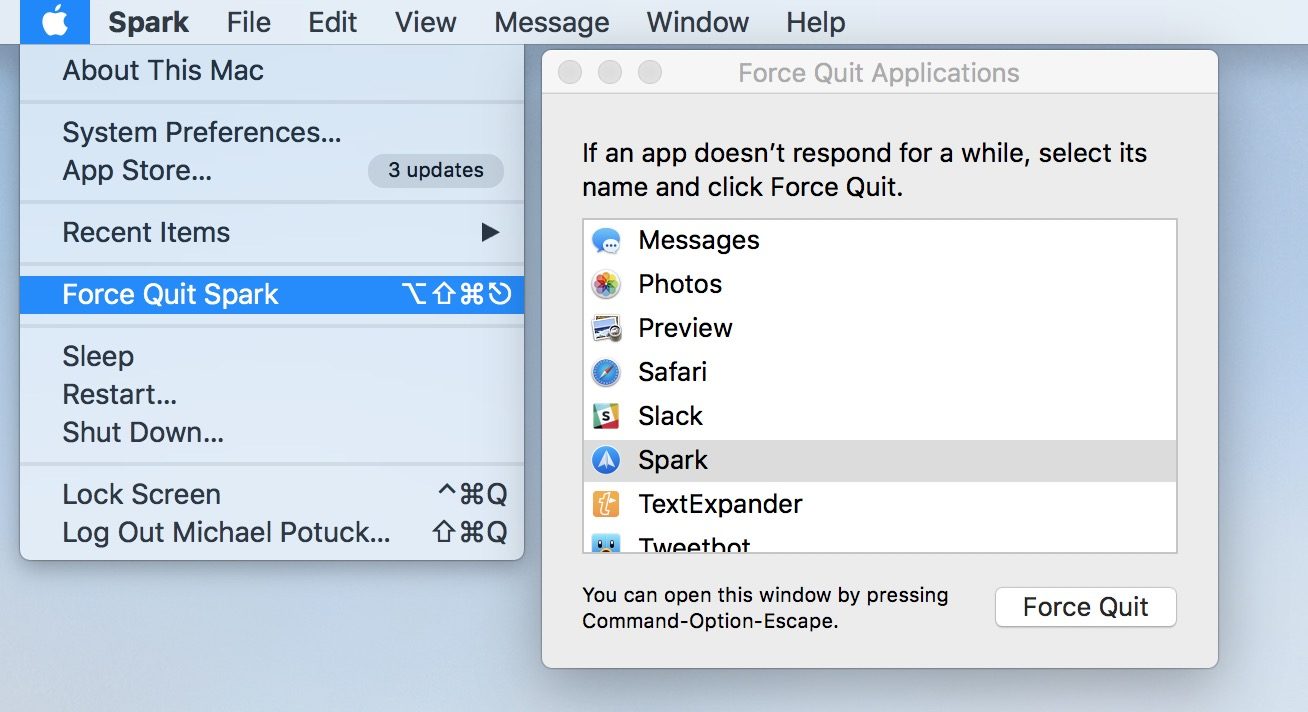
Nov 06, 2019 It’s easy to identify if multiple browser or windows opened from the same app. Do Right-click on an app icon in dock Choose Quit or Force Quit. Now, let’s look at alternative tricks to Force Quit App on macOS Mojave and earlier operating systems of Apple Mac Computer. Force Quitting Applications When an application within CrossOver is stuck and won’t close, there are two ways to force the application to close. 1) Use the system tray icon. In the bottom right hand corner of the screen, next to the system tray icons for Chrome (including the clock etc.) there is a small icon with the CrossOver logo on it.
One way Mac OS X differs from Windows is that when you close the last window, the app itself stays open. If you look at the Dock, you will still see a small dot underneath the app icon to indicate. To move any menu bar icon, simply hold the “Command” key, then click and drag the icon. You can move any icon anywhere this way. This means you can move third party icons over to the right, into territory Apple previously held as sacred. So if you want to put itsycal. Jan 21, 2019 When tossing the main application in the trash doesn’t do the trick (or if you only want to get rid of the icon but not the app), there are several ways to prevent clutter on your menu bar. With all the extras out of the way, you can make room for the tools you use on a regular basis, reduce the load on your Mac, and streamline your day-to. The Dropbox desktop experience includes a Dropbox icon in your system tray (Windows) or menu bar (Mac). The Dropbox icon in your system tray/menu bar is your go-to spot to jump back into your work, right from your desktop. It gives you easy access to: Personalized lists of your files, folders, and notifications; Your desktop app preferences.
For Windows users, random hanging or freezing of the computer isn’t uncommon and happens to me too. And there have been scenarios when certain applications (or rather processes) get stuck into that never ending “Not Responding” state. During such times, I rely on Task Manager to get moving.
I am mainly talking about forceful killing of applications/processes to resume work or to start a new instance of the same. However, during times of haste I have accidently killed system processes, as a result of which things get worse. This definitely is my carelessness, but more importantly what I am trying to convey is that the risk and danger is always there.
Cool Tip: You can start the Task Manager by using Ctrl + Alt + Del option and choosing the right option. Better, just use Ctrl + Shift + Esc to save that extra click.You know, you could be sharing your computer or letting a newbie (like my little nephew) use it. And this also means that you have doubled your risk. So, I considered installing an alternative to the Task Manager that provides a quick app access for killing and restarting processes. The advantage is that it hides all other features of the overloaded manager.
Task ForceQuit is different from what we have already talked about in the past. At that time our motto was to aid you into more analysis options. Today we plan to help you get rid of the clutter and minimize everything into one simple tool.
Installing and Using Task ForceQuit
The moment you download and start installing the application it will ask you to include CleanMyPC as a maintenance solution. So be careful to uncheck the box in order to avoid useless installations.
When done you will see the Task Force Quit tool up and running. The app interface shows the list of programs and not processes currently running on your machine. As is clear you have options to either Force Quit or Restart the said application. You should also note that the restart option is not available with default Windows Task Manager; another aspect to boast about.
Besides you can easily restart the explorer, restart you machine to command it to shut down.
When you close the application window it does not actually terminate. Rather, it takes a background stand and minimizes to the System Tray.
Force Stop Mac App
You may also kill or restart programs from the System Tray. Simply right-click on the application System Tray icon and choose the program to take action on.
Conclusion
With this tool you can really narrow the danger of killing system processes by chance. Moreover, if you wish, and if you have administrative rights, you can limit the access to Task Manager to other users. The simplicity of the tool appeals to me and the best part is that my little nephew has learnt how to use it. 🙂
The above article may contain affiliate links which help support Guiding Tech. However, it does not affect our editorial integrity. The content remains unbiased and authentic.Also See#programs
Force App Tray Icon To Stop Mac Computer
#SoftwareForce App Tray Icon To Stop Mac Screen
Did You Know
It’s estimated that spammers only get one reply per 12 million sent emails.